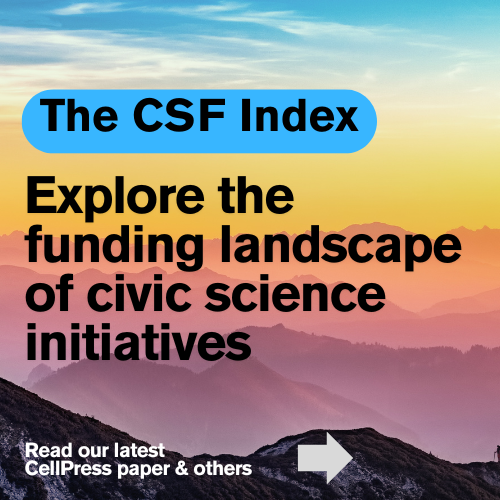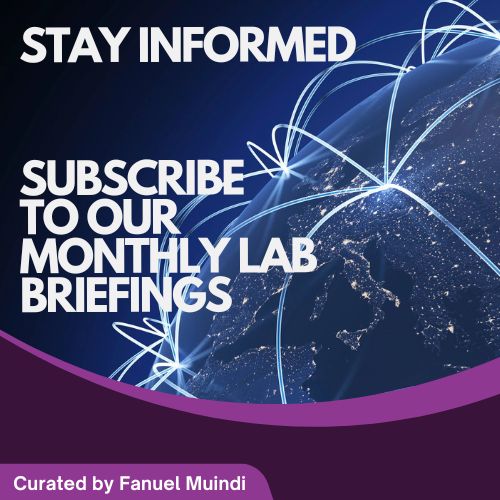Civic Science Observer
Associate Professor Nathaniel Frissell shares insights on using ham radio to study space weather

Nathaniel Frissell, an associate professor of physics and engineering at the University of Scranton in Pennsylvania, has been a ham radio enthusiast ever since middle school. About 10 years ago, Frissell discovered a way to combine his passion for ham radio with his professional background and expertise in space physics.
Frissell is the founder of Science Citizen Investigation, or HamSCI, which he still co-leads today. The group seeks to connect professional scientists with amateur radio operators so that they can work on various research projects together.
The initial seeds of HamSci were planted around 2015 when Frissell was a graduate student at Virginia Tech. He had already been a ham radio operator for years, but he realized that ham radio data could be analyzed to see how space weather affected radio propagation.
A major eclipse in 2017 helped grow the group even further. As Frissell worked with others to study the eclipse’s effects on the ionosphere, they found that amateur radio data could offer some clues.
“From that project, we created HamSCI, which is really a broader initiative to bring together amateur radio operators and professional space physicists to help each other out,” Frissell told The Civic Science Observer. “It’s been going on since then, and here we are today.”
HamSCI, which receives some support from NASA, seeks to explore how space weather in the upper atmosphere affects the ionosphere and how that relationship is reflected in short-wave radio communications and high-frequency radio communications.
According to HamSCI’s website, some of the questions scientists ask are: “How does the ionosphere respond to inputs from space and from the neutral atmosphere? How does the ionosphere couple with the neutral atmosphere and with space? What are the sources of medium and large-scale traveling ionospheric disturbances? What are the causes of Sporadic E?”
Amateur radio operators study how disturbances such as solar flares, geomagnetic storms and traveling ionospheric disturbances affect radio wave propagation and how ionospheric science can help amateur radio operators improve communications.
Much of HamSCI’s work has involved crunching and data from the eclipses of October 2023 and April 2024, according to Frissell. Some post-doctorate students are preparing presentations, while others are working to model the Doppler shift or plot the solar eclipse QSO Party data to see how the eclipse affects different frequencies and different parts of radio communication.
However, beyond analyzing eclipse data, “we do other things as well. We develop radio receivers and ground-based sensors that can make measurements of space weather impacts. We call this a personal space weather station,” Frissell said. “So, we actually have hardware devices that we are deploying to different places, and they’re listening to radio signals and sending all that data back. And we’ll use that to study how solar flares can affect the radio signals and how geomagnetic storms can affect the radio signals. I’m very interested in things called traveling atmospheric disturbances, so we will look at all of that as well.”
Interest in HamSCI has grown since its start at Virginia Tech. Its members are from around the world. In North America, scientists are affiliated with the New Jersey Institute Technology, which is where HamSCI had its latest annual meeting, as well as with Case Western Reserve University in Ohio and the University of Alabama. Amateur radio operators hail from New Hampshire, California and Missouri, among other places.
Outside of North America, HamSCI scientists and volunteers can be found in the U.K., Egypt and Germany.
Different regions might have different specialties; scientists at Case Western Reserve have been working on the Doppler shift and developing a prototype receiver, while the University of Alabama has been working on magnetometers.
How citizen scientists and researchers work together
Researchers at colleges and other institutions work with the volunteers to collect and analyze data on space weather.
“In running HamSCI, I’ve learned that the social and management challenges are just as important as the technical challenges, Frissell said. “When you are working with so many different people and organizations, volunteers, students, and professionals, it is very important to develop a good environment where people are excited and enthusiastic about what they are doing. If you have that, it is much easier to overcome any technical challenge we may face.”
To collect data, Frissell considers what might interest amateur radio operators and their capabilities.
“We are driven by both professionals and by amateurs. So someone like me, who’s a professional, might say, Okay, here’s a science question and here’s how I think we’re going to address it. This is what I think we’re going to do,” Frissell said. “So I might set the initial goal, and I might present that to the amateur community, and I’ll work with people in the amateur community to figure out how to make all of that work.”
For instance, Frissell knew that the amateur radio operator community linked to do contests, where operators get on the radio for a weekend and try to make contact with as many other amateur radio operators as a way to rack up points.
When the 2017 eclipse occurred, Frissell worked with other scientists, volunteers and the American Radio Relay League to develop a contest encouraging radio operators to make a lot of operators send signals over the air so that scientists can listen to see what happens to those signals during the eclipse.
“We were able to organize in such a way that we were able to get everyone engaged,” Frissell said.
HamSCI makes local connections as well. The University of Scranton recently noted that the Frankford Radio Club has offered a $10,000 grant to help university students and physics faculty members to develop a contest dashboard that will be used by students and amateur radio operators.
While the scientists benefit from the data that amateur radio operators provide, they also sometimes benefit from their observations.
“I’ve just learned a tremendous diversity in different techniques and ways of thinking about things,” Frissell said. For instance, amateur radio operators had sent him figures using the HF Dopper technique during the 2017 eclipse, and it was a measurement he had previously considered.
Also, “we were just looking at [the Doppler data] as a single line, and an amateur operator came up and said, no, you really need to look at it as a spectrum, and you can see all this additional complexity,” Frissell said. “So really, by talking to all of these different people, I’m able to pull out these unique nuggets that I hadn’t realized.”
Frissell was also able to help connect volunteers with other scientists who he knew were working on similar observations. He would tell one person that the person needs “to be talking to this person over there, because you each have a different part of the puzzle. In a lot of ways, a lot of my role as a lead person here is trying to figure out how to help all these puzzle pieces work together. And I think that’s been really, really fascinating,” Frissell said.
HamSCI’s work has involved some challenges in collecting large-scale space weather data: for starters, everyone must agree on what type of data needs to be collected and what instruments should be run.
Other challenges include “making sure that people stay engaged and keep their instruments running, ensuring that there is an appropriate repository to keep all of the data and making sure that the data gets stored there properly, making sure that there are good people analyzing and making use of the data and so many more,” Frissell said. “Traditional methodologies often fall short in terms of spatial coverage. Amateur radio operators and other volunteers can help fill in the gaps, but, of course, they also fall short in a similar way simply because the geospace system is so large.”
However, “in the end, the traditional professional methodologies and the amateur radio methodologies complement each other. You really need all of these types of data to gain the best understanding of the environment around us.”
Joanna Marsh is a freelance writer and journalist based in Washington, D.C. For The Civic Science Observer, she reports on new developments across the citizen science landscape, covering both new research and on-the-ground practice. Her work highlights how local communities are engaging with scientists to contribute to ongoing scientific research and lessons being learned by the involved stakeholders.

-
Civic Science Observer4 weeks ago
What are the objectives of the Neurotech Justice Accelerator at Mass General Brigham?
-
Civic Science Observer3 days ago
Meet the New Hampshire organization changing the way we see insects
-
Civic Science Observer2 months ago
Dear Colleagues: Now is the time to scale up public engagement with science
-
Civic Science Observer6 days ago
Dear Colleagues: Help us understand the national impacts of federal science funding cuts on early career researchers in academic laboratories






















